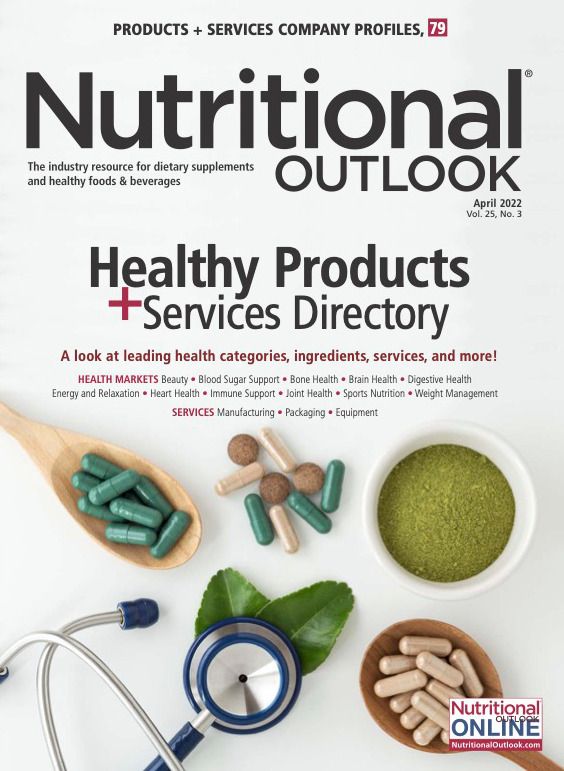Blood sugar support supplements become more versatile
Scientific advancements are making blood sugar products multifunctional and multimodal.
Photo © Артур Ничипоренко - Stock.adobe.com

The dietary supplements market for blood sugar support is evolving. Ingredient advances are enabling formulators to create products that can address a broader cluster of blood sugar–related health concerns. At the same time, brands are finding opportunities in smarter, more targeted products that appeal to specific subsets of consumers, expanding the diversity of product formats available.
Consumers’ growing interest in blood sugar support is driving these developments, especially as technological advancements make real-time, non-invasive blood sugar monitoring possible for any consumer. Product companies will find more opportunities for experimentation and customization. Here are some of the evolving product and market trends that are pushing blood sugar supplements forward.
Blood Sugar Audience Is Younger, More Diverse
The consumer base for blood sugar products is expanding, leading to a need for newer, more diverse products. Asher Tyberg is the CEO of Teelah Corporation (Brooklyn, NY), manufacturer of the YumVs brand of multivitamins. This January, YumVs launched a zero-sugar gummy multivitamin for blood sugar support. The YumVs Zero Diabetic Multivitamin is formulated with chromium, thiamine, and magnesium for blood sugar support, and contains zero sugar.
Growing rates of diabetes and prediabetes are creating more awareness about the impact of sugar on the body, which is in turn increasing demand for blood sugar supplements even among younger Americans, Tyberg says. As more customers join the category, their expectations of blood sugar products will grow.
“This market has skewed younger as many people are diagnosed with diabetes and prediabetes at an earlier age,” Tyberg explains. “As the population of people with prediabetes continues to grow, their supplement demands will more closely correlate with general market demands. No longer can a product taste bad and be accepted. Consumers are looking for supplements that are more in line with everything else they use in their everyday lives, like products that are non-GMO and naturally sourced.”
Consumers Want Tailored, Fast-Acting Products
While demand for traditional blood sugar–support ingredients like chromium and cinnamon persists, emerging consumer preferences are creating opportunities for specialized products with differentiated positioning. Wouter Claerhout, chief marketing officer for Phynova (Oxfordshire, UK), says the future of blood sugar supplements lies in niche products that target specific functional endpoints.
Phynova’s branded Reducose ingredient, a proprietary water extract of the plant Morus alba, is the hero ingredient in Nestlé Health Sciences’ branded product Nutren GlucoSmart. Launched in December 2021, Nutren GlucoSmart is a nutritional powder packaged in stick packs that is designed to be sprinkled on meals.
“Although maintaining a healthy blood sugar response is still the starting point, brands will increasingly position themselves around the cascade of health benefits that consumers can achieve,” Claerhout predicts, noting that “This includes sustained energy, focus, cognitive function, weight management, sports performance, and longevity.”
Advancements in wearable technology are also making it possible for consumers to measure supplement efficacy in real time by continuously monitoring blood glucose levels, Claerhout says. This real-time monitoring will separate science-based products from products built solely on marketing hype.
New Ingredients Expand Blood Sugar Market
Blood sugar supplements are becoming more advanced and varied. Supplement brands are increasingly incorporating emerging ingredients like palmitoleic acid and chitosan oligosaccharide into their blood sugar formulations, says Gene Bruno, MS, MHS, RH (AHG). Bruno is the vice president of scientific and regulatory affairs at NutraScience Labs (Farmingdale, NY) and a professor of nutraceutical science at Huntington University of Health Sciences (Knoxville, TN).
“Palmitoleic acid, an omega-7 fatty acid, has been shown to improve insulin resistance and circulating insulin levels,” Bruno explains. “It also reduces triglyceride levels and improves LDL and HDL cholesterol.” Meanwhile, chitosan oligosaccharide, an ingredient derived from crab shells, has been shown in studies to lower blood sugar levels and mitigate increases in postprandial blood sugar, including in subjects with metabolic syndrome, he says.
While studies show that several emerging ingredients may have positive effects on blood sugar, Bruno cautions that brands should avoid trying to incorporate too many ingredients into a single product.
“There’s a juggling act with respect to how many high-end ingredients you can include in your formula while still keeping the product affordable,” Bruno explains.
At the same time, he also cautions that merely “fairy dusting” ingredients into a finished product poses both an ethical challenge and a practical one. “Some companies solve this problem by including significantly lower doses of key ingredients, so the consumer sees them listed on the label but doesn’t know there isn’t enough of any one ingredient in the product to have any benefit.” If the product doesn’t contain an efficacious dose of any one ingredient, then the brand is selling a product that doesn’t work. “If the product doesn’t work, then sooner or later consumers will stop using it, and the product will fail,” Bruno explains.
“It’s better to include fewer ingredients at clinically relevant doses,” he advises.
Blood Sugar Market Is Maturing
Advancing consumer concerns around maintaining healthy blood sugar levels are opening up opportunities for proven blood sugar supplements that can offer additional functional benefits like weight management or sustained energy. Companies must also remember that as the demographic for these products expands, consumers in this market will no longer tolerate poor taste, artificial coloring or processing agents, or genetically modified ingredients.
Concerns around efficacy are also prompting second thoughts around multi-ingredient blends even as emerging ingredients come onto the market. Finished-product brands in this space can succeed by finding the right mix of effective ingredients, multifunctional formulations, and strong brand positioning.

Prinova acquires Aplinova to further increase its footprint in Latin America
April 7th 2025Prinova has recently announced the acquisition of Brazilian ingredients distributor Aplinova, which is a provider of specialty ingredients for a range of market segments that include food, beverage, supplements, and personal care.

























